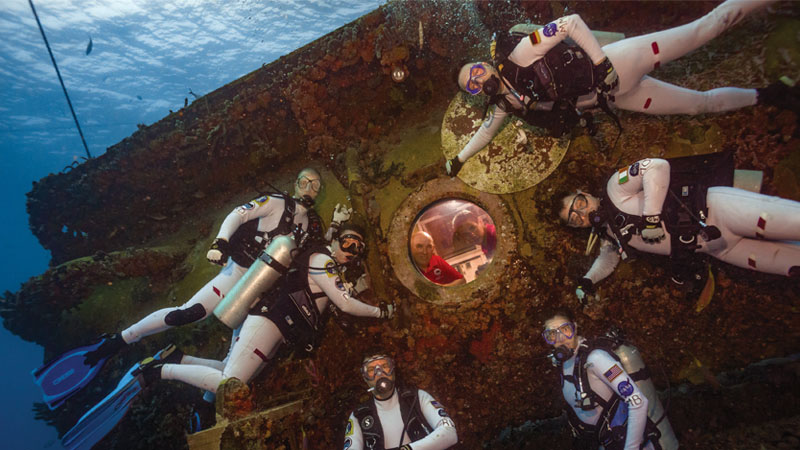Testing the waters under the sea, on a volcano
By Joe Chambliss and Jonathan Metts|December 2016
The Life Sciences and Systems Technical Committee advances technologies required to keep people healthy and safe as they explore space.
The Life Sciences and Systems community is actively conducting research and planning to enable human exploration of space.
NASA’s One-Year Mission concluded in 2016 with astronaut Scott Kelly and Russian cosmonaut Mikhail Kornienko’s return to Earth. Investigators have received most of the blood samples taken from Kelly in orbit and from Kelly’s twin on the ground as well as samples from the twins six months after Kelly returned to Earth. Batch sample analysis has begun. Results will be presented at the January Human Research Program Investigators’ Workshop in Galveston, Texas.
NASA’s Space Biosciences Division has validated its International Space Station WetLab-2 system, which conducts real-time gene expression analysis, and in April, NASA astronaut Kate Rubins performed the first gene sequencing in space.
In July, a team at NASA’s Johnson Space Center, or JSC, in Houston completed testing to evaluate effects of carbon dioxide on cognition and decision-making in crewlike subjects. Twenty-two subjects performed tests during exposure to carbon dioxide concentrations of 600, 1,200, 2,500 and 5,000 parts per million. Steps were taken to ensure subjects and investigators were blind to the test conditions. Results will be used in defining exploration carbon dioxide requirements.
The Wearable Kinematic Systems project by Massachusetts-based Charles Stark Draper Laboratory developed a small, unobtrusive, wearable kinematic vision and inertial system to estimate how astronauts interact with the vehicle-habitat. The team completed hardware demonstrations in June at JSC.
The NASA Extreme Environment Mission Operations 21 mission was completed in August. Inside the undersea habitat, a crew of six aquanauts tested a DNA sequencer, a medical telemetry device and the Microsoft HoloLens.
An international team of six completed a yearlong analog simulation in a domed facility in the Mars-like environment of the Mauna Loa volcano in Hawaii as part of the Hawaii Space Exploration Analog and Simulation program. The crew was mostly self-sufficient and only left the habitat while suited for simulated extravehicular activities.
The European Space Agency and other European agencies have been very active with life sciences onboard the ISS. The ESA experiment Spheroids is investigating the effects of weightlessness on tube formation, differentiation and the mechanisms of apoptosis in human endothelial cells. Kayser Italia, based in Livorno, Italy, completed manufacturing of the Advanced Closed Loop System flight model avionics and delivered it to Airbus DS for integration and launch in 2017. CNES, the French space agency, is preparing 12 instrument and technology demonstrators for human physiology for ISS experiments that will be operated by Italian astronaut Paolo Nespoli and French astronaut Thomas Pesquet.
The EDEN ISS Antarctic greenhouse project completed a two-week study at the German Aerospace Center in Cologne. Subsystem development and plant growth trials are ongoing.
The NASA Advanced Exploration Systems Life Support Systems team is addressing technology gaps to improve reliability and further close the air and water recovery loops. Major milestones completed this year include delivery of the aerosol sampler for flight demonstration on ISS and major design reviews for a spacecraft atmosphere monitor and the brine dewatering system.
NASA’s Human Exploration Spacecraft Testbed for Integration and Advancement at JSC continued unmanned testing including an electrolyzer, human metabolic simulator, air revitalization system and wireless sensors in an integrated environment.
Delaware-based ILC Dover delivered the Z-2 exploration suit prototype to JSC in early 2016. Features of the Z-2 include rear-entry donning, nominal operation at 4.3 or 8.2 pounds per square inch, titanium bearings, impact-resistant composite hard upper torso, planetary walking boots, compatibility with suit ports, integrated audio system and adjustable sizing in the upper torso, waist, arms and legs. Teams tested the Z-2 suit to evaluate the carbon dioxide washout performance at ambient pressure and also completed an evaluation of the sensor glove in an underwater suited training environment. ★



































